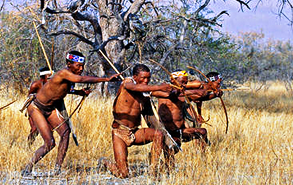This article provides a comprehensive analysis of the Kenya history from the 8th century to date. It talks about the Arab rule, Portuguese rule, British rule, African rule, ethnic clashes, the origin of Saba Saba, Kenyatta vs Odinga rivalry, KANU Youth Group, democracy movements and more. .
.
8th century: Arabs and Persians visit Kenya and bring the Muslim influence
15th Century: Swahili Culture is formed and Islam Religion is adopted for business reasons. Coast residents are obliged to convert to Islam to avoid being sold as slaves 1498: Portuguese arrive in East Africa.
1505: Portuguese Bomb and Occupy Mombasa. They construct Fort Jesus to serve as a defense center. Arabs feeling that the Portuguese were taking over their trading zones retaliate with war. The Portuguese also try to convert people to catholic religion but they are overpowered by the Islam that had already grown strong. This marks a war of 200 years between the Portuguese and the Arabs for the control of the coastal region. Kenyans become the losers as their town and property is destroyed and life lost.
1698: Arabs overpower the Portuguese and take control of Mombasa and fort Jesus.
1822: Sayyid Said the Sultan of Oman sends his troop to take over East Africa coastal region. The swahili people ask for military support from Britain to fight Sayyid Said’s troop. Britain responds by sending two warships to protect Mombasa
1847: European Missionaries travels deep into Kenya and first arrive at Taita Hills. German missionaries Krapf and Rebmann later report the presence of Mount Kenya and Mt. Kilimanjaro.
1886: The Europeans hold a meeting in Berlin commonly known as the Berlin conference where they divide Africa among themselves. The coastal strip is given to the Sultan of Oman
1894: The first president of Kenya Jomo Kenyatta is born
1898: Construction of Mombasa-Kisumu Railway progresses. A few years later the Nairobi City is founded 1901: The 965km Mombasa/Kisumu railway is completed.
1902: Uganda/Kenya border is adjusted and Kisumu area which was part of Uganda becomes part of Kenya.
1914: Over 200,000 Kenyans are recruited to fight in World War 1 by the British. Over 50,000 of them die while on war.
1922: Educated Africans begin protesting against the British rules
1924: The second president of the republic of Kenya Daniel Arap Moi is Born
1931: Kenyatta goes for his studies to England where he later returns to become a political leader
1939: Labour unions lead strikes in Mombasa.
1952: Mau Mau is born and brutally rebels the Brithis Rule. Jomo Kenyatta is later arrested and Jailed for leading the Mau Mau Rebellion.
1952: King George VI England’s Queen Elizabeth II’s father dies of Cancer in Aberdare Kenya.
1956: Dedan Kimathi is arrested
1956: British soldiers retaliate to Mau Mau Rebels by burning down villages and Bombing settlements from air. About 12,000 Kenyans are killed and 100,000 imprisoned.
1957: Dedan Kimanthi is brutally tortured to death
1959: Political party formation begins and Kenyatta is moved from Prison to House arrest.
1960: Britain and other Europeans begin leaving Kenya
1963: Kenya gains independence
1964: Kenya becomes a republic nation under the leadership of President Kenyatta and vice president Oginga Odinga. KADU joins KANU which marks the end of opposition.
1966: Oginga Odinga unsatisfied with his roles in KANU starts opposition party but he is arrested and later released. His arrest and release occurs several times.
1969: Tom Mboya declares his ambition of becoming the future president and he is assisted. It is alleged that he was killed by a Kikuyu. Jaramogi Odinga is arrested.
1974: Jomo Kenyatta is elected for another term as the president of Kenya and thereafter declares Kiswahili as a national language.
1969: Conflicts between ethnic groups continue. Tom Mboya aspires to future presidency and is assassinated by a Kikuyu. Odinga is arrested.
1978: Jomo Kenyatta Dies.
1978: Daniel Toroitich Arap Moi becomes the second president of Kenya. Under his leadership opponents are mysteriously killed and universities closed.
June 1982: KANU declares The Republic of Kenya a one party state.
August 1982: a military coup is attempted to overthrow the moi regime. Thereafter several people are sentenced and about 1000 jailed.
1987: President Moi is re-elected
1990’s: USA and Western Europe begins supporting the campaign for democratic development. The KANU Youth Group is formed to harass Kenyan politicians who campaign for a democratic government. Ethnic war begins.
July 7, 1990:“Saba Saba” demonstration begins. The government reacts by sending police to kill and arrest, civilians, politicians, journalists and human rights activists who supported saba saba. Several people are killed. The big political participants of this day were (Kenya Citizens, Raila Odinga, Orengo, Kenneth Matiba, Charles Rubia,Jaramogi oginga, Masinde Muliro, Martin Shikuku…)
1991: Forum for the Restoration of Democracy (FORD) is born. Moi later bans the party and arrest its leaders like Oginga Odinga. The western nations react by suspending their economic aid to Kenya claiming that Moi’s regime had violated human rights. The economy of Kenya is hard hit which forces Moi to accept muliti partism. Opposition parties are formed.
1992: Prior to election ethnic clashes emerge in the rift valley and over 2,000 people are killed. December 19 1992, Moi is again elected as the president of Kenya under a multiparty election. Foreigners claim that elections were manipulated
1994: Oginga Odinga dies
1996: Moi declares that he will change the constitution to allow him to rule for another term. This leads democratic demonstrations.
1997: Moi is elected for the 5th term
1997: Moi is declared the second richest person in African after Mobuto Sese Seko of Congo
2001: A coalition government is formed and Raila is elected as Minister for energy…to be continued

Leave a Comment